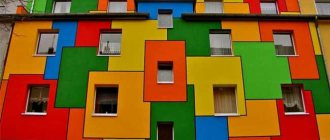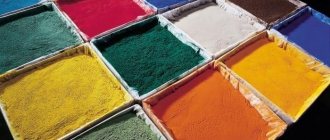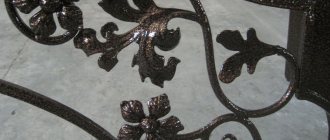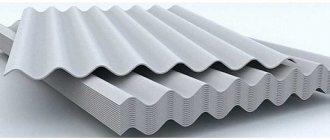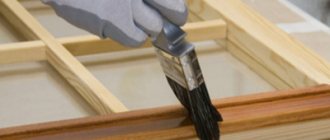It is difficult to imagine construction without a material called OSB boards. Strength and simultaneous lightness have become the main advantages for this product. The affordable price makes the product popular in the construction of objects for various purposes. Surface finishing is the next stage after the construction of the structure is completed. Primer paint for OSB in this case is considered the most affordable solution, which has a number of optimal characteristics.
Use of primers and primers for pre-treatment of OSB
Additional protection against moisture is provided by pre-treatment at the factory. Otherwise, the consumer will not receive quality goods. For this purpose, sometimes the ends are tinted, and the entire product is covered with paraffin. But paraffin forms weak bonds with any materials, so such simple protection is not enough for further operation. Over time, various materials peel off, including paint and plaster.
This is why careful pre-treatment becomes such an important factor. These works are called priming; the compositions themselves are primers for OSB. Sometimes the term primer is also used, which means the same thing.
Careful pre-treatment becomes such an important factor.
Advantages and disadvantages
Any type of processing requires preliminary removal of factory layers. Next comes protection with adhesive materials. In the 1st layer there is a primer. This use of materials gives owners its advantages:
- Reducing the consumption of glue and paints for further work;
- High-quality whitening;
- Suitable for internal and external use equally;
- Fast drying process, regardless of how the room is arranged;
- Protection against various manifestations of fungus and mold;
- Good leveling of the slab surface, with complete isolation from negative influences;
- Safety.
The negative side is that after drying, not all compositions are safe. Drying time differs for different formulations. When a primer is used for OSB, work processes depend on the humidity of the room and its temperature.
Suitable for internal and external use equally.
What is fire protection?
OSB boards burn as well as any wood product. During the combustion process, very caustic substances are released into the atmosphere, including poisonous hydrocyanic acid.
Often it is toxic smoke that leads to irreversible consequences. To increase the resistance of OSB to fire, special compounds called “fire-bioprotection” are used. The most common at the moment are 2 compositions:
- "Soppka". This is a paint with the addition of resins, which is designed specifically for application to OSB. Unlike conventional antiseptics, it is thicker and more viscous. After drying, a durable film is formed on the surface, which is not washed off in the rain due to the deep penetration of the composition into the structure of the base. The service life of the coating exceeds 15 years;
- "Valtti Color Satin". This is a high-quality facade glaze that has a high covering ability and protects wood from rotting.
Both compositions, in addition to fire protection, are also antiseptics that prevent the development of mold.
Choosing a primer, what it depends on, the best options
The type of surface obtained directly depends on what decision the future buyer made. Each variety has its own characteristics, and operating conditions are also different.
Each variety has its own characteristics, and operating conditions are also different.
Acrylic primer
This treatment not only helps to strengthen the base. It brightens the product, creating an optimal basis for further application of wallpaper and any painting. With a starting price of 50 rubles, the solution became accessible to everyone.
Has the following set of characteristics:
- Drying at high speed. After two to three hours, work continues without problems. Air humidity and temperature determine exactly how much the process will take in a given case. When applied in cold weather, the water immediately freezes, so such work cannot be carried out;
- Using different formulation options. Some are suitable for indoor or outdoor use only. Other compositions add an antiseptic. Deep penetration compounds for general strengthening deserve a separate discussion;
- Easy to use. For dilution, ordinary water is used, so the materials are easy to apply and wash if necessary;
- Safety.
The materials have virtually no harmful odors, the same applies to negative effects on human health. 1 hour after treatment, you can be nearby and not worry about the appearance of negative factors if such a primer was used for OSB.
It brightens the product, creating an optimal basis for further application of wallpaper and any painting.
Alkyd primer
The danger of some components to human health are the only disadvantages noted by users. Work can only be carried out if there is good indoor lighting.
Among the positive qualities:
- Resistance to chemical compounds. Even when chemically active substances get on the surface, practically nothing happens;
- Presence of antiseptic properties. The appearance of fungus and mold is excluded, because water does not get inside;
- Increasing the strength of the original surface. Polymers in primer paint for OSB provide increased strength. Resistance to various types of damage also improves. Weather-resistant properties are of a high level. The material allows both external and internal use equally;
- Creating an ideal base for alkyd paints. Only this type of primer is suitable for those who plan to use alkyd paints and varnishes in the future. The consumption of the compounds themselves is one and a half to two times less.
Polymers in primer paint for OSB provide increased strength.
Adhesive primer
“Concrete contact” is an additional name for the primer for OSB boards of this type. It goes better with further puttying, plaster or wallpaper. The quartz filler in the composition increases the surface roughness. Putty with decorative plaster is laid on the walls in a layer of maximum strength. The compositions have good fixation and do not run off.
The primer promotes good adhesion between finishing materials. Allows you to create irregularities in different formats, which simplifies preparation for further processing.
Brushes and rollers with long bristles are most effective for application. Without thorough mixing before application, the distribution of materials over the surface does not occur evenly. The solution is optimal for liquid wallpaper or plaster over painted or varnished slabs. They can also be combined with a detoxifying primer for OSB.
The primer promotes good adhesion between finishing materials.
How to choose finishing materials
Finishing work on OSB boards must be carried out taking into account special requirements.
Specifics of priming
Before applying the putty, sand and then prime the surface.
Sanded OSB panels are available on the construction market. Their price is a little higher, but it is justified by the fact that it eliminates the need to spend your own time and effort preparing the slabs.
Not just any primer is used, but only one that is specifically designed for treating wood. These mixtures contain no water. A primer based on drying oil or glyphthalic varnish is ideal.
Selection of putty
Processing OSB boards is possible only with special means. If the putty is intended for other purposes, for example, for work on concrete, then it is probably not suitable for wood.
The following mixtures, commercially available in ready-made form, are used for working with wood:
- Acrylic putty for OSB boards. It is used for leveling any wooden bases, also suitable for wood-chip surfaces.
- Nitro putty. This is a composition that dries quickly, made from cellulose and resin with the addition of plasticizers, organic solvents and fillers. As a suitable solvent, grades R-645 and R-649 can be used. The best nitro putties can be called MBSh, ASh-24, ASh-32.
- Oil and glue based putties. They consist of drying oil, varnish, adhesives, chalk, modifiers and thickeners. Drying oil is suitable as a solvent. The most common oil-adhesive mixtures are LSh-1, LSh-2.
- Adhesive composition. As a base, glue of a more liquid consistency is used - oil. Plasticizers are present as additional ingredients.
- Gypsum putty. Consists of gypsum with polymer additives. Gypsum-based mixtures are most suitable for wooden bases. Of the putties of this type, the most famous brands are Vetonit, Rotband, Goldband.
- Dispersion mixture based on artificial resin. Experienced builders consider the German putty Akkord-Finish AS 5 to be one of the best. It is characterized by excellent ductility and is used as a finishing mixture when finishing a plastered base.
Technology and features of applying primers to OSB boards
The entire working surface is treated with primer mixtures. Then adjacent sheets do not move away from each other due to shrinkage, and you don’t have to worry about the appearance of gaps and other similar effects. After such sealing, vibrations in the building are partially damped.
The entire working surface is treated with primer mixtures.
Indoor process
Adhesion to surfaces made of wood and other materials is reduced by the presence of a top layer, so it must be cleaned off. After some time, in the absence of preparation, the material loses its attractive appearance and its characteristics deteriorate. The effectiveness of the OSB primer is reduced.
Internal work is performed according to the following algorithm:
- Repriming the wooden surface before starting. Otherwise, nothing can be inspected or changed later.
- Removing factory coatings from surfaces. As a standard, grinders with a P180 attachment are used.
- Dust removal. Only use a vacuum cleaner, not a damp cloth.
- Transfer into containers with suitable characteristics after mixing. If necessary, apply absorbent or strengthening compounds.
- Using a foam roller or a small brush, spread the composition over the surface. Large smudges and stains are unacceptable; distribution throughout the product must be uniform.
- Other devices with tools are left to dry for 8 hours after thorough rinsing with water.
- The joints between the cracks are sealed with acrylic putty.
- Acrylic parquet putty mixed with sawdust is used before varnishing.
- Reinforcement of gaps using serpyanka and fiberglass.
- Repeated sanding, dust removal.
- Second primer coat followed by repeated dust removal and sanding.
- Concrete contact is the second layer when the cladding is made of plaster, in this case you can do without grinding. The basic soil rules for OSB boards remain the same.
The absorption of soil by wood also requires separate accounting. Increasing the intensity of work makes the fibers more likely to swell. It is recommended to apply the material in thin layers so that each layer dries first. The result is better when applied two or three times.
It is recommended to apply the material in thin layers so that each layer dries first.
Priming OSB for outdoor work
Work from the outside must take into account the unfavorable conditions in which the OSB board is located. Wooden products, along with the resins that glue them together, suffer from precipitation and temperature fluctuations, and direct rays of the sun. Moisture and frosty air penetrate inside, causing the structure to continue to deteriorate, and then priming will no longer be possible.
Therefore, in this case, some differences in the algorithm are noticeable:
- Work begins only in case of dry weather, when there is no wind;
- They begin lining immediately after the soil has completely dried. This is the time when the soil has the highest adhesive properties;
- At temperatures below +5 degrees, application of materials is unacceptable;
- It is not recommended to treat surfaces if they are overheated due to the sun;
- First, the sheets are cleaned from the back side, the primer comes next;
- Here they use an alkyd mixture, which remains quite toxic. Therefore, it would not be superfluous to use personal protective equipment;
- Compared to internal work, external work is often larger in volume. Therefore, it is more profitable to use spray guns for application rather than rollers and brushes;
- Removing excess using plastic scrapers, periodically;
- Drying time – 12 hours;
- The use of elastic acrylic compounds for sealing joints;
- Each layer must be dry, there are two in total;
- Alkyd mixtures, contact concrete in the second layer.
Work begins only in case of dry weather, when there is no wind.
Recommendations for application
The process consists of several stages, shown in the diagram.
The workflow for applying primer is quite simple
Instructions for applying the composition yourself look like this:
| Illustration | Description of the stage |
| The surface is cleaned . Before priming OSB boards, you need to remove dust and dirt from the surface. To do this, you can use a vacuum cleaner or a regular broom. Dried stains are wiped off with a damp cloth. | |
Joints are sealed. For these purposes, acrylic sealant or polyurethane foam is most often used. It all depends on the design features and the size of the joints.
| |
| The primer composition is being prepared . Ready-made options need to be mixed thoroughly; if you have a concentrate, then the required amount of water is added. | |
| The composition is applied to the surface . Work on OSB boards most often begins with joints, as shown in the photo; they need to be processed especially carefully. Next, the rest of the surface is primed. |
Features of priming OSB before certain types of cladding
Primer mixtures are in many cases considered a universal solution. But sometimes it is necessary to maintain an individual approach. This does not apply to all materials, but some of them are widely used.
Wallpaper
From time to time, this material can be replaced with more modern and high-quality analogues. The presence of only alkyd primers or paints in the base requires the use of a mechanical method. Acrylic compounds that can be tinted to match the color of the surrounding wallpaper are the optimal solution for such situations. A solution of glue with PVA, in a ratio of 1:3, is suitable.
From time to time, this material can be replaced with more modern and high-quality analogues.
Tile
Expected to operate at high humidity. Therefore, high-quality preliminary cleaning is required. An epoxy primer or façade primer with moisture protection is ideal for the first layer. Then the second one is concrete contact.
Expected to operate at high humidity.
Liquid wallpaper
Alkyd or acrylic mixtures are used first. Then they move on to applying concrete contact. There is another option - when alkyd or acrylic paint is followed by a painting mesh, which is strengthened with a special construction stapler.
Alkyd or acrylic mixtures are used first.
Coloring
Much determines the type of paint that will be used in the future. The type of soil is individually selected for each coating. Oil paint is combined with drying oil; acrylic paint needs the same primer. Alkyd composition is more effective in the case of facade finishing. Latex compositions require latex types of processing. Paints with polyurethane do not require a primer at all.
Much determines the type of paint that will be used in the future.
Why do you need to paint slabs?
Coating OSB boards with paints and varnishes has its advantages:
- Paint or varnish provides additional protection from moisture. Water will not be able to penetrate the structure of the slab - deformation will not occur inside and on the surface of the OSB.
- Modern paints mask the texture of the slabs, so large chips are almost invisible.
- Painting is not as labor-intensive as cladding with decorative panels and is cheaper.
It is important to know. OSB is painted and then varnished only for interior work.
From the outside, the slabs are protected using more serious methods due to the significant climatic impact.
Preparing the surface for further decoration
Tiles, painting or wallpaper of various types go on top after preliminary preparation is completed. Each type of material has its own requirements for work. And it differs in certain characteristics.
Under wallpapering
Under such circumstances, it is optimal to give preference to acrylic primer, to which a color is added to match the color of the wallpaper. Then it will be easier to choose the finish that best matches the existing materials. Separately monitor the quality of the compositions.
The work itself assumes the following order:
- Attaching the mesh to the joining seams using putty.
- After applying the primer, they proceed to re-puttying. The surface is treated with sandpaper when everything is dry.
- Apply a second layer of soil.
- Wallpaper is being glued.
Overlapping layers and uneven distribution of paint should be eliminated during surface preparation. Otherwise, the work will not give the expected effect.
It is optimal to give preference to acrylic primer, to which a color is added to match the color of the wallpaper.
For painting
The surface is treated with a composition depending on what kind of paint the buyer has chosen. Then the layer of the composition will become more even. Material consumption is reduced, which contributes to savings. The ends and both sides of each slab must be treated equally. Then you won’t have to worry about bending and swelling of the structures.
Material consumption is reduced, which contributes to savings.
Under the tile
For bathrooms, kitchens and rooms, such coatings are most often chosen. Therefore, here it is optimal to give preference to a façade water-repellent primer or an epoxy variety. After them comes a layer with concrete contact. Tiles are laid in different ways:
- Above the mesh with reinforcement;
- On the OSB board after placing the joists and plywood at the base;
- On a double layer of primer;
- If necessary, the seams are additionally sealed.
Here it is optimal to give preference to a façade water-repellent primer or an epoxy variety.
Paint with stain
Stain of different shades will help emphasize the texture of the wood, while the composition will protect the slab from destruction. The choice of color is due to the variety of stains on the building materials market:
- oak;
- chestnut;
- cherry;
- nut;
- tobacco;
- wenge.
Technology for coating OSB boards with stain:
- Apply stain with a spray gun or brush.
- Leave until completely dry.
- Apply the primer.
After covering the wall with stain, you can create an artificially aged effect on it by covering the surface with a patina. After it dries, remove the remaining composition with a soft sponge and cover the wall with colorless varnish. The varnish will protect the surface and give it additional effect.
List of sources
- GidPoKraske.ru
- remontonly.ru
- Pro-karkas.ru
- bv73.ru
- beton-stroyka.ru
- www.sibear.ru
Review of popular manufacturers
It is important to pay attention to the fact that the compositions must be mixed before direct use. This is especially important for adhesive materials. If the work is done incorrectly, quartz sand will have a negative impact on the result, even if the base is a modern panel.
Among the famous names are the following:
- GF21;
- Moment SOIL;
- Kreisel 301;
- Master Inter;
Many of these primer mixtures are universal varieties, for which not only painting is allowed.
It is important to pay attention to the fact that the compositions must be mixed before direct use.
Depending on the constituent components, white spirit or turpentine, drying oils and solvents can be used for dilution. Compared to homemade compositions, the price of finished materials is slightly higher. But time is saved; the surface treatment method is indicated in the accompanying instructions.
Conclusion
Now you know what compositions can be used and how to properly organize the workflow. The video in this article will help you understand the topic even better. If you have questions, ask them in the comments below.
Did you like the article? Subscribe to our Yandex.Zen channel
June 22, 2022
Wood, Construction Chemicals
If you want to express gratitude, add a clarification or objection, or ask the author something, add a comment or say thank you!

